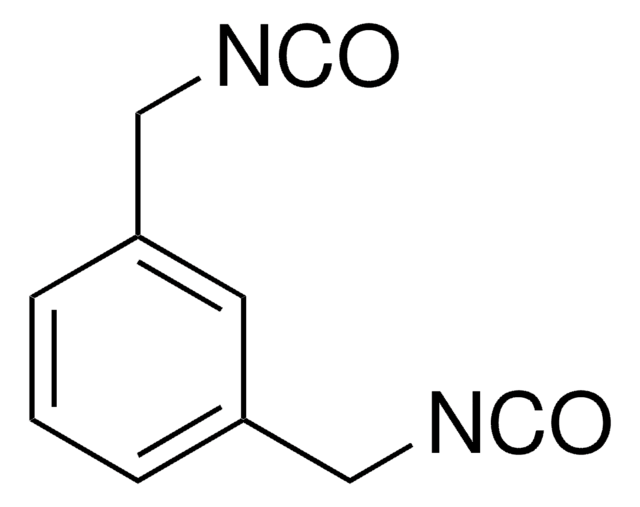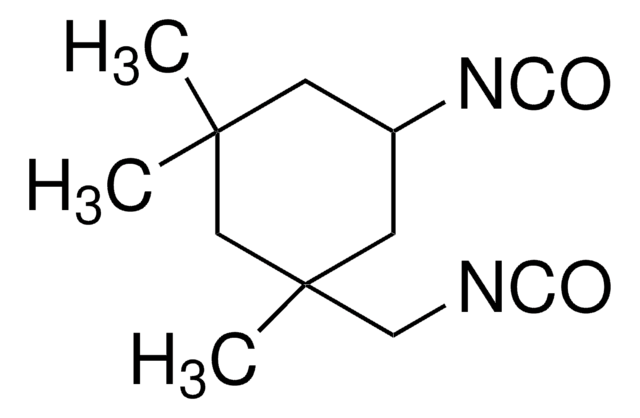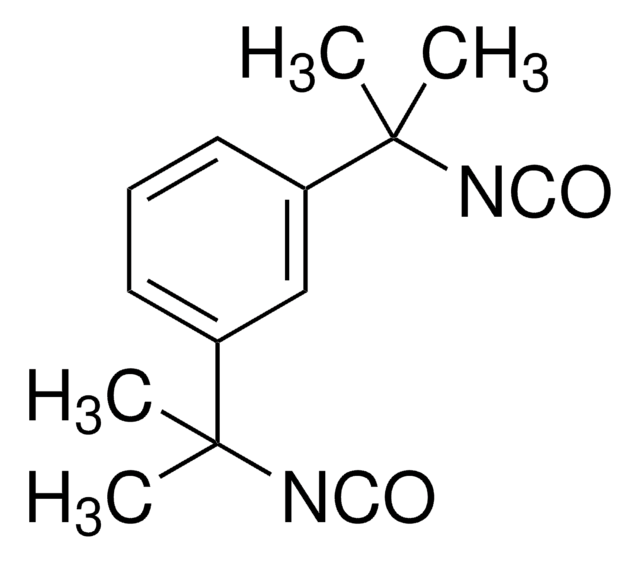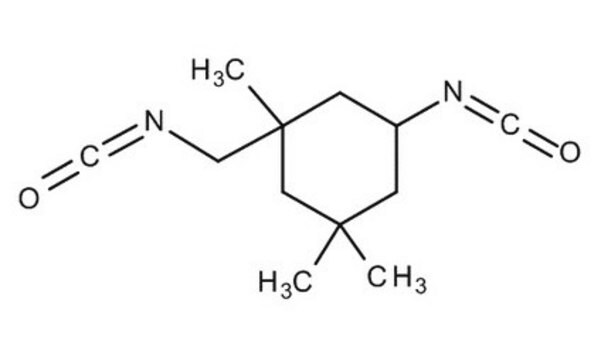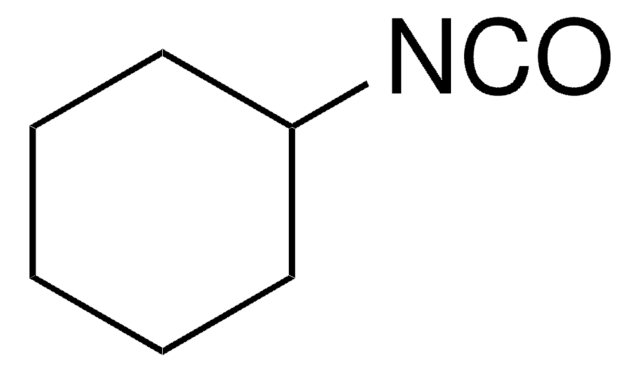Wichtige Dokumente
405949
1,3-Bis(isocyanatomethyl)cyclohexan
mixture of cis and trans, 99%
Synonym(e):
1,3-Bis(methylisocyanate)cyclohexane, Hydrogenated m -xylylene diisocyanate
About This Item
Empfohlene Produkte
Dampfdruck
0.4 mmHg ( 98 °C)
Qualitätsniveau
Assay
99%
Form
liquid
Brechungsindex
n20/D 1.485 (lit.)
Dichte
1.101 g/mL at 25 °C (lit.)
SMILES String
O=C=NCC1CCCC(CN=C=O)C1
InChI
1S/C10H14N2O2/c13-7-11-5-9-2-1-3-10(4-9)6-12-8-14/h9-10H,1-6H2
InChIKey
XSCLFFBWRKTMTE-UHFFFAOYSA-N
Signalwort
Danger
Gefahreneinstufungen
Acute Tox. 2 Inhalation - Acute Tox. 4 Oral - Aquatic Chronic 4 - Eye Dam. 1 - Resp. Sens. 1 - Skin Corr. 1C - Skin Sens. 1A
Lagerklassenschlüssel
6.1A - Combustible acute toxic Cat. 1 and 2 / very toxic hazardous materials
WGK
WGK 3
Flammpunkt (°F)
235.4 °F - closed cup
Flammpunkt (°C)
113 °C - closed cup
Persönliche Schutzausrüstung
Eyeshields, Faceshields, Gloves, type ABEK (EN14387) respirator filter
Hier finden Sie alle aktuellen Versionen:
Besitzen Sie dieses Produkt bereits?
In der Dokumentenbibliothek finden Sie die Dokumentation zu den Produkten, die Sie kürzlich erworben haben.
Kunden haben sich ebenfalls angesehen
Unser Team von Wissenschaftlern verfügt über Erfahrung in allen Forschungsbereichen einschließlich Life Science, Materialwissenschaften, chemischer Synthese, Chromatographie, Analytik und vielen mehr..
Setzen Sie sich mit dem technischen Dienst in Verbindung.